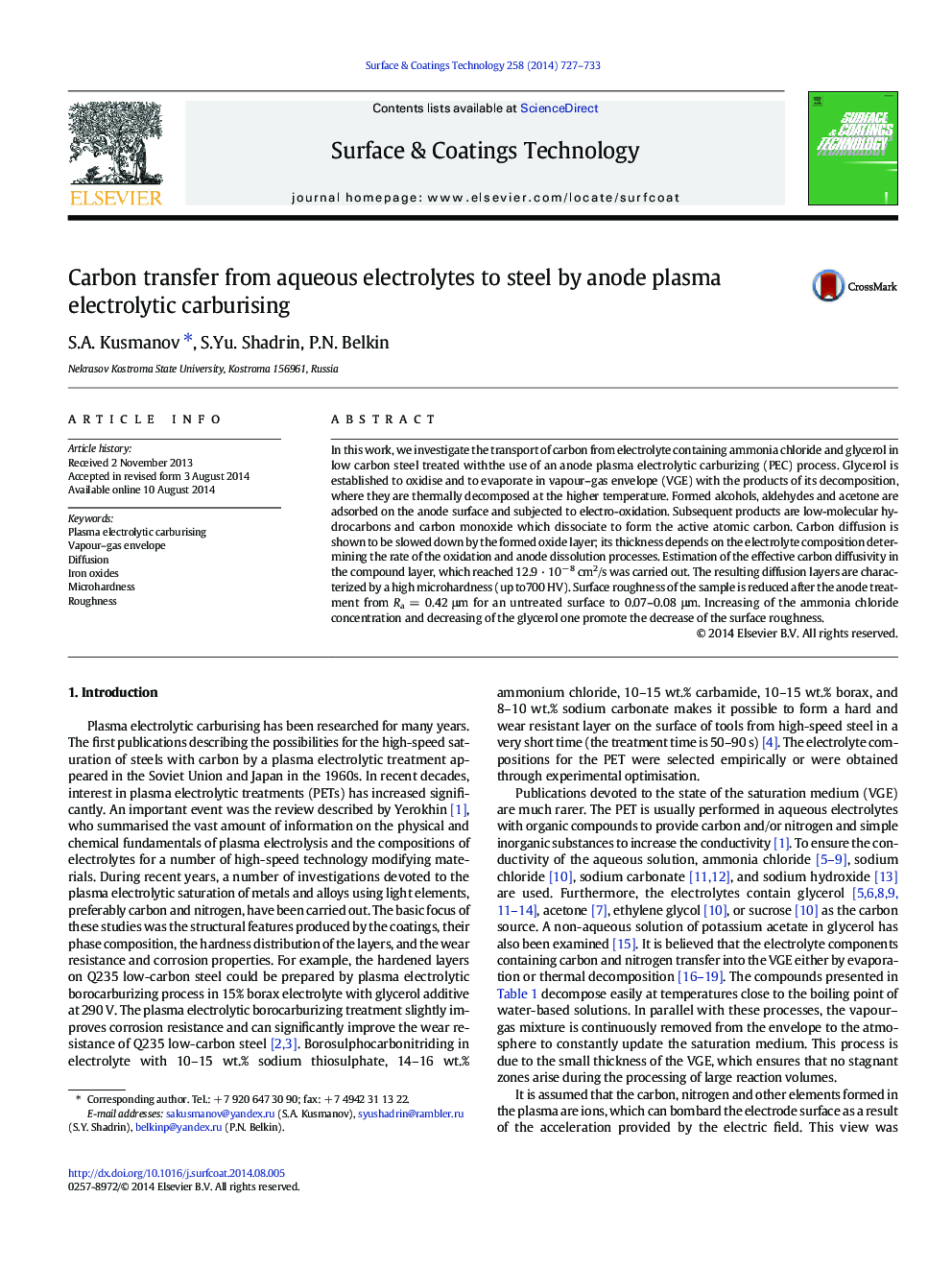| Article ID | Journal | Published Year | Pages | File Type |
|---|---|---|---|---|
| 8027407 | Surface and Coatings Technology | 2014 | 7 Pages |
Abstract
In this work, we investigate the transport of carbon from electrolyte containing ammonia chloride and glycerol in low carbon steel treated withthe use of an anode plasma electrolytic carburizing (PEC) process. Glycerol is established to oxidise and to evaporate in vapour-gas envelope (VGE) with the products of its decomposition, where they are thermally decomposed at the higher temperature. Formed alcohols, aldehydes and acetone are adsorbed on the anode surface and subjected to electro-oxidation. Subsequent products are low-molecular hydrocarbons and carbon monoxide which dissociate to form the active atomic carbon. Carbon diffusion is shown to be slowed down by the formed oxide layer; its thickness depends on the electrolyte composition determining the rate of the oxidation and anode dissolution processes. Estimation of the effective carbon diffusivity in the compound layer, which reached 12.9 · 10â 8 cm2/s was carried out. The resulting diffusion layers are characterized by a high microhardness (up to700 HV). Surface roughness of the sample is reduced after the anode treatment from Ra = 0.42 μm for an untreated surface to 0.07-0.08 μm. Increasing of the ammonia chloride concentration and decreasing of the glycerol one promote the decrease of the surface roughness.
Related Topics
Physical Sciences and Engineering
Materials Science
Nanotechnology
Authors
S.A. Kusmanov, S.Yu. Shadrin, P.N. Belkin,
